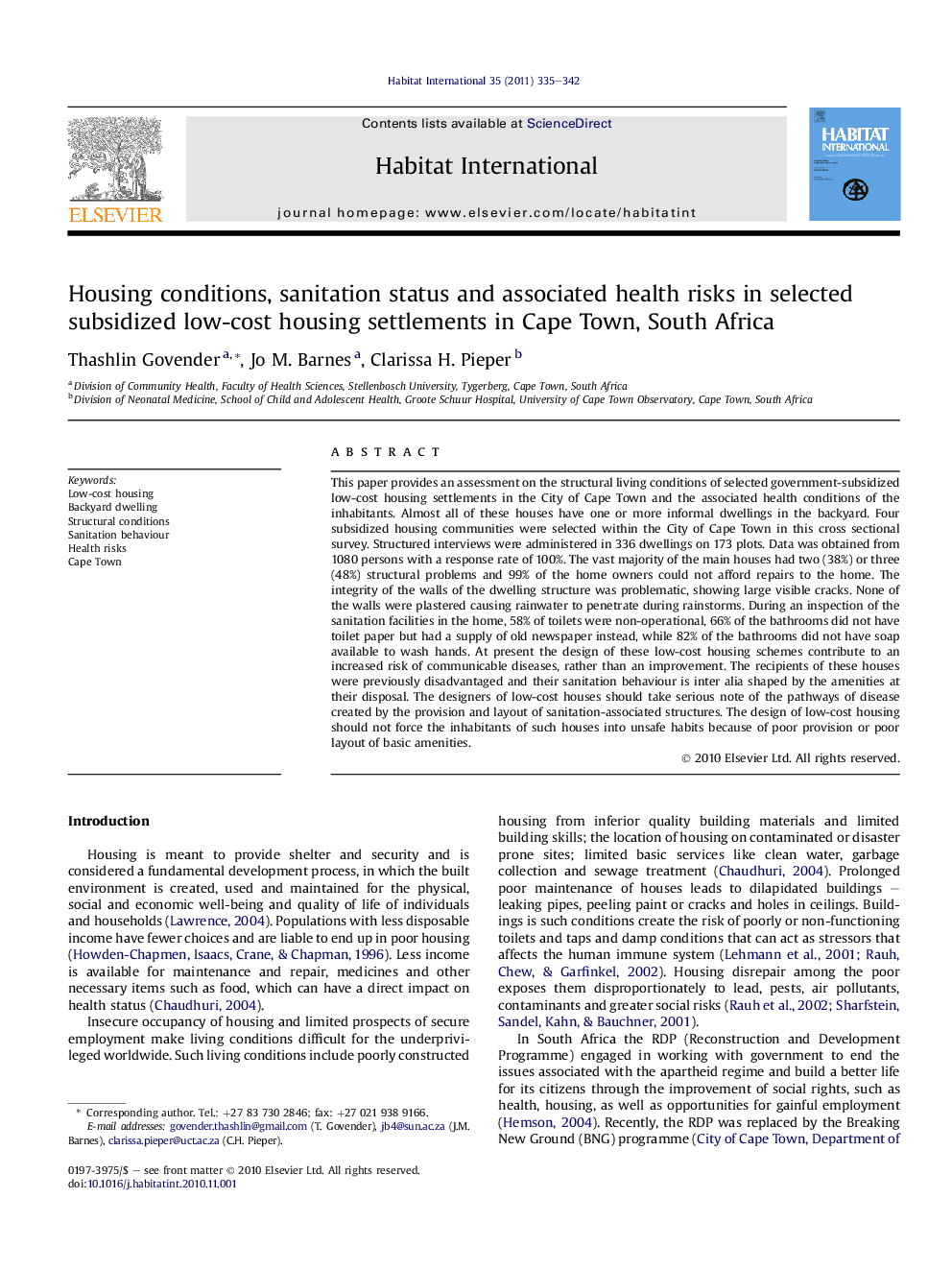| Article ID | Journal | Published Year | Pages | File Type |
|---|---|---|---|---|
| 1048016 | Habitat International | 2011 | 8 Pages |
This paper provides an assessment on the structural living conditions of selected government-subsidized low-cost housing settlements in the City of Cape Town and the associated health conditions of the inhabitants. Almost all of these houses have one or more informal dwellings in the backyard. Four subsidized housing communities were selected within the City of Cape Town in this cross sectional survey. Structured interviews were administered in 336 dwellings on 173 plots. Data was obtained from 1080 persons with a response rate of 100%. The vast majority of the main houses had two (38%) or three (48%) structural problems and 99% of the home owners could not afford repairs to the home. The integrity of the walls of the dwelling structure was problematic, showing large visible cracks. None of the walls were plastered causing rainwater to penetrate during rainstorms. During an inspection of the sanitation facilities in the home, 58% of toilets were non-operational, 66% of the bathrooms did not have toilet paper but had a supply of old newspaper instead, while 82% of the bathrooms did not have soap available to wash hands. At present the design of these low-cost housing schemes contribute to an increased risk of communicable diseases, rather than an improvement. The recipients of these houses were previously disadvantaged and their sanitation behaviour is inter alia shaped by the amenities at their disposal. The designers of low-cost houses should take serious note of the pathways of disease created by the provision and layout of sanitation-associated structures. The design of low-cost housing should not force the inhabitants of such houses into unsafe habits because of poor provision or poor layout of basic amenities.
Research highlights► Provides information on the housing acquisition, design of houses and waste disposal practices in government-sponsored low-cost houses and shacks. ► Provides a sanitation profile of the community that indicates that the mixture of low-cost housing and slum conditions poses a high health risk to these inhabitants. ► Indicates that the supposed improvements in health brought about by improved housing do not materialise under these conditions.
